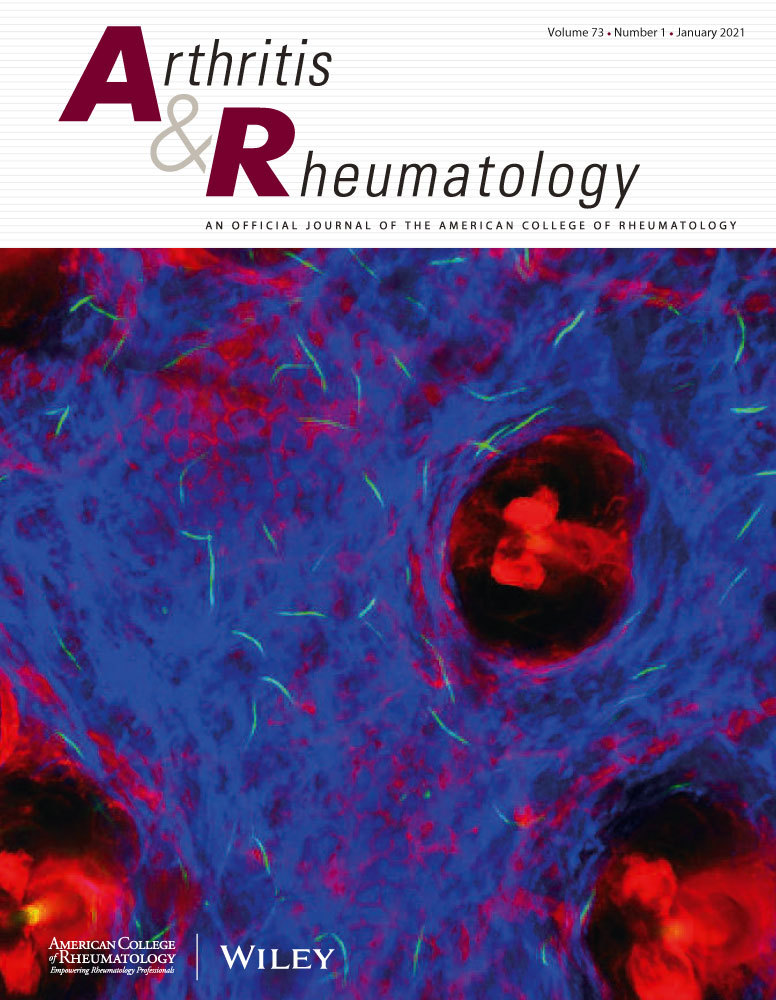Comparative Cardiovascular Safety of NSAID versus Colchicine Use When Initiating Urate-Lowering Therapy Among Patients with Gout: Target Trial Emulations.
IF 11.4
1区 医学
Q1 RHEUMATOLOGY
引用次数: 0
Abstract
OBJECTIVE Among patients with gout, NSAIDs are commonly used despite scarce safety data in this specific population. Therefore, we quantified the comparative cardiovascular safety of NSAIDs versus colchicine among patients with gout starting allopurinol. METHODS We conducted a sequential, propensity score-matched, new-user comparative effectiveness study using the target trial emulation framework to compare the risk of MACE (composite of myocardial infarction [MI], stroke, or cardiovascular death) among patients with gout started on allopurinol who were prescribed NSAIDs or colchicine for gout flare prophylaxis. A sensivity analysis employed inverse probability of treatment weighting (IPTW). Secondarily, we examined the risk of MACE with colchicine or NSAIDs versus no prophylaxis. RESULTS Among 18,120 propensity score-matched adults with gout starting allopurinol with NSAIDs or colchicine (83.5% male, mean age 60.9 years), the incidence of MACE and cardiovascular death were higher among NSAID users compared to colchicine users, with rate differences of 38.8 (95% CI, 15.4 to 62.2) and 10.9 (0.7 to 21.1) per 1000 person-years, respectively, and hazard ratios (HR) of 1.56 (1.11 to 2.17) and 2.50 (1.14 to 5.26), respectively. Results were similar when IPTW was applied. Compared to no prophylaxis, NSAID use was associated with a higher risk of MACE and MI with HRs 1.50 (1.17 to 1.91) and 1.93 (1.35 to 2.75), respectively. CONCLUSION In these target trial emulations of patients with gout starting allopurinol, NSAID prophylaxis was associated with a higher risk of MACE than colchicine or no prophylaxis, suggesting the avoidance of NSAID for gout flare prophylaxis.痛风患者开始降尿酸治疗时,非甾体抗炎药与秋水仙碱的心血管安全性比较:目标试验模拟。
目的:在痛风患者中,非甾体抗炎药被普遍使用,尽管在这一特定人群中缺乏安全性数据。因此,我们量化了非甾体抗炎药与秋水仙碱在痛风起始别嘌呤醇患者中心血管安全性的比较。方法:我们采用目标试验模拟框架进行了一项序贯的、倾向评分匹配的、新使用者比较有效性的研究,以比较使用别嘌呤醇开始治疗的痛风患者服用非甾体抗炎药或秋水仙碱预防痛风发作的MACE(心肌梗死[MI]、中风或心血管死亡的组合)的风险。敏感性分析采用处理加权逆概率(IPTW)。其次,我们检查了秋水仙碱或非甾体抗炎药与无预防的MACE风险。结果在18120名倾向评分匹配的痛风起始别嘌呤醇与非甾体抗炎药或秋水仙碱的成人中(83.5%为男性,平均年龄60.9岁),非甾体抗炎药服用者的MACE和心血管死亡发生率高于秋水仙碱服用者,其发生率差异分别为38.8 (95% CI, 15.4 ~ 62.2)和10.9(0.7 ~ 21.1)/ 1000人-年,风险比(HR)分别为1.56(1.11 ~ 2.17)和2.50(1.14 ~ 5.26)。应用IPTW时,结果相似。与不进行预防相比,使用非甾体抗炎药与MACE和MI的高风险相关,hr分别为1.50(1.17至1.91)和1.93(1.35至2.75)。结论在这些开始使用别嘌呤醇的痛风患者的目标试验模拟中,非甾体抗炎药预防与MACE的风险高于秋水仙碱或无预防,提示避免使用非甾体抗炎药预防痛风发作。
本文章由计算机程序翻译,如有差异,请以英文原文为准。
求助全文
约1分钟内获得全文
求助全文
来源期刊

Arthritis & Rheumatology
RHEUMATOLOGY-
CiteScore
20.90
自引率
3.00%
发文量
371
期刊介绍:
Arthritis & Rheumatology is the official journal of the American College of Rheumatology and focuses on the natural history, pathophysiology, treatment, and outcome of rheumatic diseases. It is a peer-reviewed publication that aims to provide the highest quality basic and clinical research in this field. The journal covers a wide range of investigative areas and also includes review articles, editorials, and educational material for researchers and clinicians. Being recognized as a leading research journal in rheumatology, Arthritis & Rheumatology serves the global community of rheumatology investigators and clinicians.
 求助内容:
求助内容: 应助结果提醒方式:
应助结果提醒方式:


